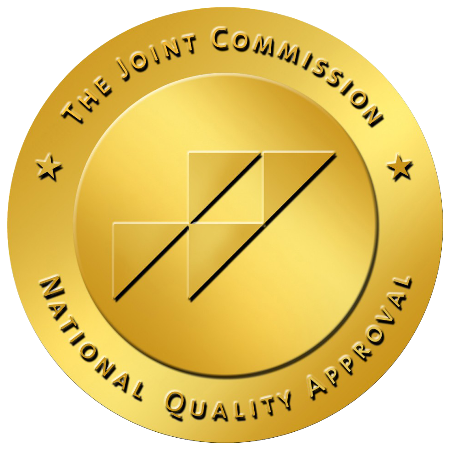Polysubstance Use

Polysubstance use, a common but often unrecognized type of substance abuse, contributes to numerous deaths annually. It involves using multiple substances at the same time, and it’s so common that most people don’t realize they’re engaging in it.
For instance, combining alcohol with prescription painkillers or using cocaine to enhance MDMA’s effects constitutes polysubstance use. Similarly, taking Xanax at night to offset morning Adderall falls under this category, even with both being prescription medications.
Trying drugs is common, but it can lead to severe problems like addiction and overdoses. This can have lasting effects on a person’s health and well-being. Polysubstance use is more about achieving a desired mental and physical state than the use of a specific drug. A behavior-focused issue demands a thorough, cautious, and well-informed treatment approach for effective management.
What Is Polysubstance Use?
Polysubstance use involves taking multiple drugs together or sequentially within a short period. The Centers for Disease Control and Prevention (CDC) says substance abuse can happen on purpose or by accident, involving illegal drugs, prescription drugs, and alcohol.
Users often seek a particular sensation or high, not necessarily tied to a specific drug. For example, those seeking sedation might mix benzodiazepines with alcohol and prescription opioids, or someone might substitute Adderall for cocaine with drinking alcohol.
Unintentional polysubstance abuse often occurs when individuals consume drugs laced with unknown substances. People commonly use fentanyl, known for its potency and addictive qualities, to adulterate drugs like heroin, cocaine, and MDMA. This makes it more likely for accidental overdoses and complications to occur when taking an unknown drug. This can lead to receiving incorrect medical care and experiencing challenging withdrawal symptoms.
Medical and addiction professionals refer to the Diagnostic and Statistical Manual of Mental Disorders (DSM) for diagnosing and treating mental health conditions. The latest DSM-5 no longer includes polysubstance use as an official diagnosis.
Substance use disorders are categorized as mild, moderate, or severe based on things like dependence and addiction. This is done instead of labeling them by the number of substances involved. The level of dependence and addiction present determines the severity of the disorder.
Even though it’s no longer an official diagnosis, the concept of polysubstance use is still helpful for understanding certain behaviors and conditions. It also plays a role in discussions about user habits, side effects, medical emergency visits, and overdose statistics.
Facts about Polysubstance Use
In the United States, nearly 20 million individuals annually qualify as having a substance abuse disorder that involves several substances. Addiction in America costs $740 billion yearly for treatment, legal problems, healthcare, public health efforts, and emergency help.
Here are more facts about using multiple substances in the United States:
- 250 people a year die because of a drug overdose death, with over half involving multiple substances
- Every year, 15 million Americans are diagnosed with alcohol use disorder, and many of them mix alcohol with other substances
- 80% of drug overdoses are opioid overdoses
- The number of fatalities resulting from the combined use of cocaine and opioids has seen a twofold increase from 2010 to 2015
- Around 80% of heroin users also use cocaine
- As many as 98% of individuals who use cocaine confessed to concurrently consuming alcohol
- Many people who use stimulants also use other substances
- Nearly half of individuals diagnosed with mental health conditions also grapple with substance abuse disorders
Treatment outcomes for polysubstance addiction are getting better with evidence-based plans that address co-occurring disorders.

Polysubstance Abuse
Polysubstance abuse doesn’t necessarily lead to dependence, and it’s important to distinguish between abuse, dependence, and addiction. Abuse might be occasional or intermittent, while dependence involves regular use to avoid withdrawal symptoms.
The Substance Abuse and Mental Health Services Administration (SAMHSA) states substance abuse is using drugs without needing them, misusing prescription drugs, or mixing substances for stronger effects. Mixing cough syrup with DXM and alcohol is polysubstance abuse. Doing it once doesn’t cause physical dependence.
Polysubstance use is more about seeking a particular feeling; the combination of drugs serves this purpose. Dependence occurs when someone can’t sleep without mixing various drugs and alcohol for sedation. Taking both sleeping pills and benzodiazepines together can cause a sedative use disorder, rather than just becoming dependent on one substance.
Before polysubstance use’s removal from the DSM-5, polysubstance dependence diagnosis was based on the following:
- Tolerance development
- Withdrawal symptoms
- Continued use despite negative consequences
- Consuming more substances or for longer periods than intended
- Spending substantial time obtaining, using, or recovering from substances
- Neglecting personal and professional responsibilities due to drug use
While the DSM-5 replaced polysubstance use with substance use disorders, many diagnostic criteria are similar. Previously, there was a misconception that polysubstance use required addiction to three specific substances, but it’s more about addictive behaviors towards various substances.
The DSM-5 provides more precise guidelines for substance use disorders, providing more accurate diagnoses and effective treatment options.
Polysubstance Abuse Effects and Risks
Mixing different drugs can be dangerous. The risks vary depending on the drugs and the person. However, there are common dangers associated with using multiple substances.
The main risks stem from the adverse side effects of each drug and the unique reactions because of their interactions.
Common dangers and adverse reactions often associated with polysubstance abuse typically encompass:
- Nausea and vomiting
- Alterations in heart rate and blood pressure
- Confusion
- Changes in appetite
- Having trouble breathing
- Heightened alertness or excessive drowsiness
- Lowered inhibitions lead to risky behaviors, including unsafe sexual practices
- Heightened risk of overdose
- Potential for fatal outcomes
Using drugs that have similar effects, like central nervous system depressants, can significantly increase the risk of breathing problems. These breathing problems can be deadly. Mixing drugs with opposite effects, such as alcohol and stimulants, can hide their strength, causing accidental overdoses and death. Thus, mixing or combining drugs with alcohol is inherently unsafe.
Also, using many different substances to treat health problems or mental health issues can make things worse in the end. It can even cause the problems you’re trying to fix even worse.
Also, using many different substances to treat health problems or mental health issues can make things worse in the end. It can often cause the problems you are trying to fix even worse.

Long-Term Effects
Drug abuse, especially using multiple drugs, harms mental and physical health, causing long-lasting effects and chronic illnesses. It also significantly impacts personal relationships and careers and can lead to legal problems.
The long-term risks associated with abusing multiple substances include:
- Increased risk of stroke
- Organ damage
- Higher likelihood of contracting chronic diseases such as HIV and hepatitis, often due to sharing needles
- Loss of cognitive function
- Worsen existing substance use and mental health disorders
- Weakening of the immune system
- Sleep disturbances
- Development of paranoia
- Increased anxiety and depression
- Weight loss
- Persistent withdrawal symptoms
Individuals battling polysubstance addiction are also more likely to suffer from post-acute withdrawal syndrome (PAWS). A good treatment for using many substances should focus on withdrawal to keep safe and reduce the chances of PAWS and relapse. Many treatment programs for polysubstance addiction recommend residential treatment centers because they have many benefits and positive results from comprehensive, evidence-based treatment.
Polysubstance Addiction Treatment at Northridge Addiction Treatment Center
Polysubstance addiction treatment requires a unique, personal approach to help build a life without substance abuse. Northridge Addiction Treatment Center is here to help start the journey to a life grounded in recovery.
Our center is in a calm place, perfect for healing. We offer a private place to live and get better. Here, you get medical detox with doctors around all the time to take care of you. This is important to check your health and make withdrawal less difficult.
Our treatment includes cognitive behavioral therapy (CBT), support groups, and other helpful ways. These methods help find and fix the thinking and actions that lead to addiction and change them into positive, healthy skills.
If you want to quit drugs or alcohol, contact Northridge Addiction Treatment Center to start your recovery. This center can help you on your journey to sobriety. They offer support and resources for those looking to overcome addiction. Take the first step and reach out for help. Our compassionate treatment specialists are eager to get you on your recovery journey.
Find Meaningful Recovery
Our caring and compassionate specialists are eager to help you comfortably navigate this journey to recovery. Our individualized treatment plan, programs, and therapies may be a perfect match for you or your loved one. Let us assist you in living the happy life you deserve. It starts with a phone call.




